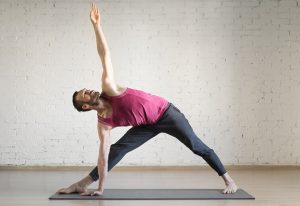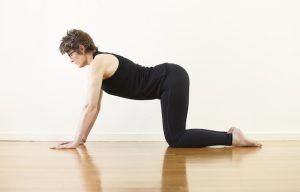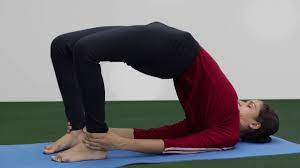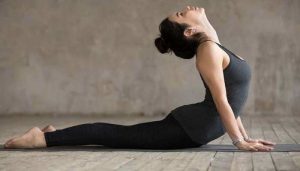
CORONARY ARTERY DISEASE – YOGA ASANAS
- January 4, 2023
- Posted by Dr. Vaidya Karanvir Singh
- 0 Comment(s)
Table of Contents
INTRODUCTION
Coronary artery disease is a health condition in which there occurs blockage of the coronary arteries. Coronary arteries are the blood vessels which supply oxygenated blood to the heart muscles only. It is one of the most common heart diseases. Coronary arteries are responsible for providing oxygen, nutrients and removing waste from the heart muscles. In coronary artery disease, the excessive cholesterol in blood gets deposited inside the walls of coronary arteries and forms plaques. These plaques cause inflammation and blockage of arteries.
Coronary artery disease is a chronic disorder and takes time to develop. The symptoms are not noticed in the beginning. Shortness of breath and pain in chest are some of the most common symptoms of coronary artery disease. It can further lead to heart attack.
With a healthy diet and healthy lifestyle, coronary artery disease can be prevented or managed. There are various types of medicines available for it. Surgery is the last option available.
WHAT ARE THE CAUSES OF CORONARY ARTERY DISEASE?
Coronary artery disease is caused due to deposition of cholesterol, fat, calcium and other substances on the inner walls of the arteries. This is known as atherosclerosis. The deposition of cholesterol is called plaque. This leads to narrowing of arteries. The arteries become harder and this condition is known as atherosclerosis. Sometimes, the plaque ruptures and blocks the arteries.
RISK FACTORS OF CORONARY ARTERY DISEASE
Some factors make a person at more risk of developing the coronary artery disease:
- People above the age of 45 years
- Males are more prone as compared to females
- Having a family history of coronary artery disease
- Sedentary lifestyle
- Lack of physical exercise
- Bad sleeping habits
- Cigarette smoking
- Intake of tobacco products
- Excessive alcohol consumption
- Less hemoglobin
- Kidney disease
- Suffering from autoimmune disorders like rheumatoid arthritis, etc
- Being overweight
- Diabetes
- Hormonal imbalance
- Endometriosis
WHAT ARE THE SIGNS AND SYMPTOMS OF CORONARY ARTERY DISEASE?
Coronary artery disease has the following signs and symptoms:
- Difficulty in breathing
- Tightness in chest
- Pain and discomfort in chest
- Pain radiating in shoulder, arm, jaw and back
- Dizziness
- Increased heart rate
- Fatigue
- Nausea or vomiting
- Indigestion
COMPLICATIONS ASSOCIATED WITH CORONARY ARTERY DISEASE
Coronary artery disease is associated with some of the following complications:
- Angina
- Irregular heart rate
- Heart attack
- Heart failure
YOGA FOR CORONARY ARTERY DISEASE
Coronary artery disease has become a very common disease now-a-days. Due to unhealthy eating habits and sedentary lifestyle, there occur increased amount of fat in body. The cholesterol levels are high and it starts getting deposited along the walls of arteries. This leads to heart problems.
Yoga can be very helpful in maintaining weight and removing toxins from the body. It has a very good effect on heart and keeps the respiratory system well. There are some of the yoga asanas which are recommended for management of heart problems. Following are the yoga asanas are:
TRIKONASANA
Trikonasana is called triangle pose also. It leads to stretching of legs and torso. It opens up chest space and promotes effect of deep breathing.
How to do it:
- Stand with the feet wide apart. Then stretch the right foot outwards while keeping the leg closer to the torso.
- Keep the feet firmly on the ground and balance the weight equally on both the feet. Then bend the right arm and touch the ground. Meanwhile, the left arm goes up.
- The waist should be kept straight. The body should bend sideways and not forwards and backwards.
- Repeat the same procedure on the other side also.
Contraindications:
- Neck pain
- Headache
- Insomnia
- Pregnancy
- Diarrhea
MARJARIASANA
Marjari means cat and asana means body posture. Marjariasana is called cat stretch. It is an excellent stretching posture.
How to do it:
- Come onto the fours- arms and legs, with back forming the top of the table.
- Arms should be perpendicular to the floor and knees are hip-width apart from each other.
- While inhaling, raise the chin and bend the head backwards. Push the navel downwards and raise tailbone.
- This is the cat pose. Hold it for 1-2 minutes and take deep breathes.
- Then exhale and release the pose gradually.
- Do the pose for 4-5 times.
Contraindications:
- Neck injury
- Back injury
SETU BANDHASANA
It is also known as bridge pose. In this asana, there occurs stretching of chest, neck, back muscles and spine. It is very helpful in relieving back pain and helps in strengthening of bones.
How to do it:
- Lie on the back on the floor
- Press onto the feet and slightly lift the hips upwards. You can slide a yoga block under them for giving support.
- During relaxing, remove the yoga block and bring the legs and hips down on the floor.
Contraindications:
- Pregnancy
- Neck injury
- Stomach ulcers
- Hernia
BHUJANGASANA
Bhujanga means cobra and asana means body posture. Bhujangasana is the cobra or snake pose. It can be done easily at home while lying down on the stomach and then stretching. It gives a good stretch to the body and instantly relieves stress.
How to do it:
- Lie down in stomach with the toes flat and soles facing upwards.
- Rest the forehead on the ground, keep the legs closer with feet and heels touching each other.
- Now slowly lift the body while taking a deep breath in. The navel should be kept in ground level.
- Both the hands should have equal pressure while pulling on and off of the torso from the ground.
- Hold the pose for 4-5 breaths. Then, breathe out and bring the abdomen, chest and head gently on floor.
- Repeat it for 4-5 times.
Contraindications:
- Pregnancy
- Carpal tunnel syndrome
- Hernia
- Recent abdominal surgery
- Fracture of ribs or wrist joints
DHANURASANA
Dhanu means bow and asana means body posture. In dhanurasana, the shape of the body is made like that of a bow. The pose should be performed 4-5 hour after meals. The best time is of early morning.
How to do it:
- Lie in the stomach with the feet apart.
- Then fold the knees and take your hands backwards and hold the ankles.
- Breathe in and lift the chest up from the ground. Pull the legs upwards and more towards the back.
- Keep the body posture stable and see forward. Pay attention to the breath.
- Maintain posture for 15-20 seconds and bring the legs and chest gently to the ground.
Contraindications:
- Neck injury
- Hernia
- Hypertension or hypotension
- Lower back pain
- Migraine
- Recent abdominal surgery

Dr. Vaidya Karanvir Singh is the younger Vaidya in Chandigarh Ayurved & Panchakarma Centre. He is the fourth generation in his family who is practicing as a general consultant in Ayurved & Panchakarma treatment at Chandigarh. In his practice, he had treated more than 1 Lakh Plus patients worldwide.





